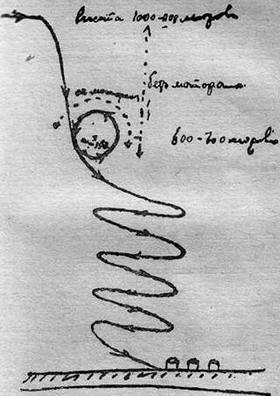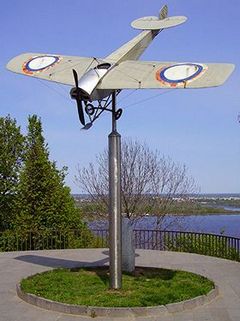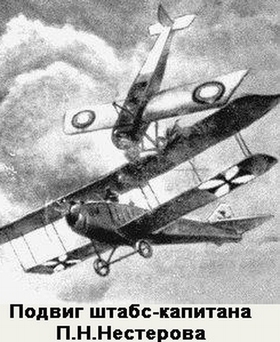











Pyotr Nikolayevich Nesterov- the founder of aerobatics
By Willie Bodenstein

Nesterov was born on 15 February 1887 in Nizhny Novgorod. His father was an army officer. He was enrolled in a military school from which he graduated in August 1904 and then enrolled in the Mikhailov artillery academy in St Petersburg. He graduated and as second lieutenant and was posted to the 9th East Siberian Artillery Brigade in Vladivostok.
Nesterov's career in aviation started in 1909 when he was posted to a balloon observation regiment as an observer. In 1911 he built his first glider and learned to fly it. Now thoroughly hooked he started flight training at the St. Petersburg aviation school earning his wings on 11 October 1912 and a short time later he also passed the examination to be a military pilot. In May 1913 he was appointed a squadron leader in the Russian Air Corps.

Despite their doubts Nesterov carried on experimenting and practising his theory and on 9 September 1913 he took to the sky in a Nieuport IV monoplane over Syretzk Aerodrome near Kiev and observed by a large crowd became the first pilot to fly a loop.
However, the authorities were not impressed and he promptly arrested for risking government property.
It was only after Frenchmen, Adolphe Pégoud, repeated the feat that Nesterov's achievement was acknowledged in his home country. He became famous overnight and was promoted to staff captain and later awarded a medal.

Nieuport IV. Photo © British Gov. Archives / commons.wikimedia.org

It was initially powered by a 50 hp (37 kW) Gnome Omega rotary engine, which was later replaced by more powerful rotaries.
The IV.G was one of the principal aircraft used by the Imperial Russian Air Service during its formative years, with roughly 300 being produced locally by the Russo-Baltic Wagon Works and Shchetinin in St. Petersburg, and the Dux Factory in Moscow.

The Soviet Union established the Nesterov Cup for the best aerobatics team. The cup was donated to the Fédération Aéronautique Internationale (FIA) in 1962. It is awarded to the Men's World Team Champions of the World Aerobatic Championships.
 |
 |
 Copyright © 2024 Pilot's Post PTY Ltd
The information, views and opinions by the authors contributing to Pilot’s Post are not necessarily those of the editor or other writers at Pilot’s Post.
Copyright © 2024 Pilot's Post PTY Ltd
The information, views and opinions by the authors contributing to Pilot’s Post are not necessarily those of the editor or other writers at Pilot’s Post.